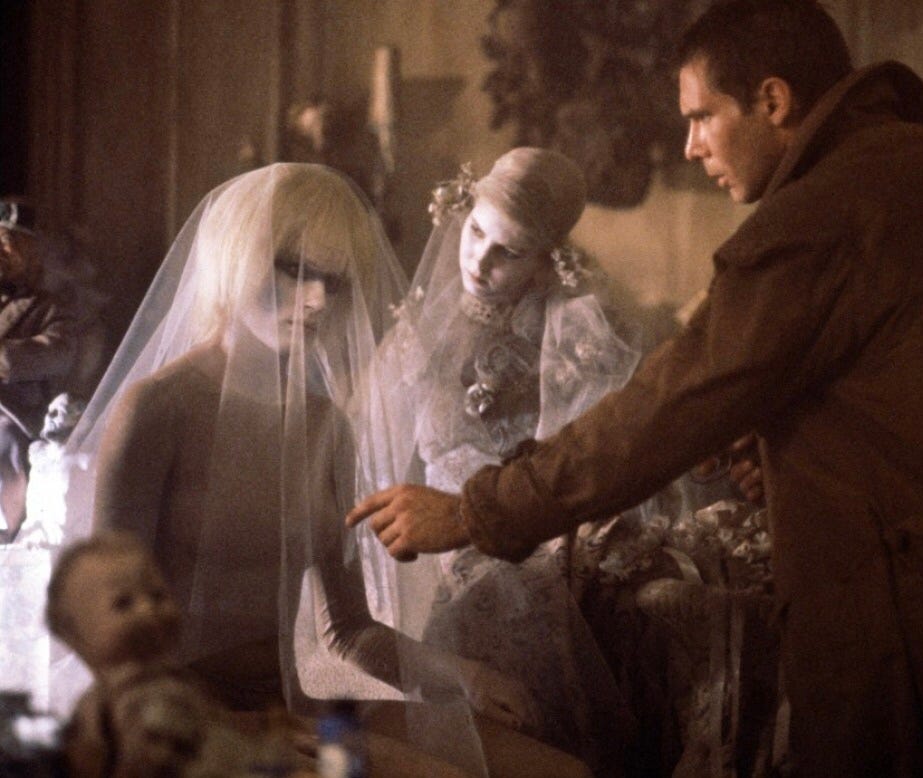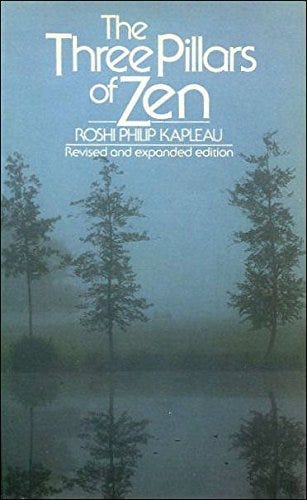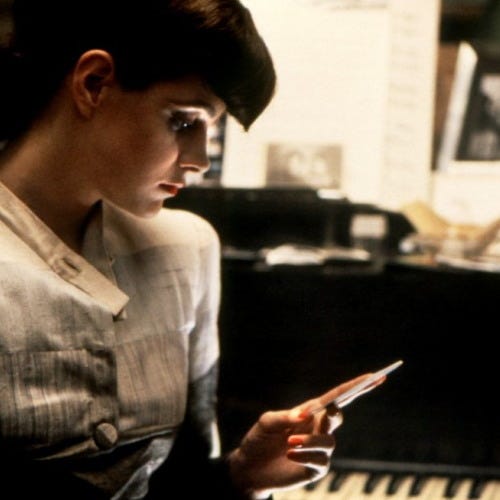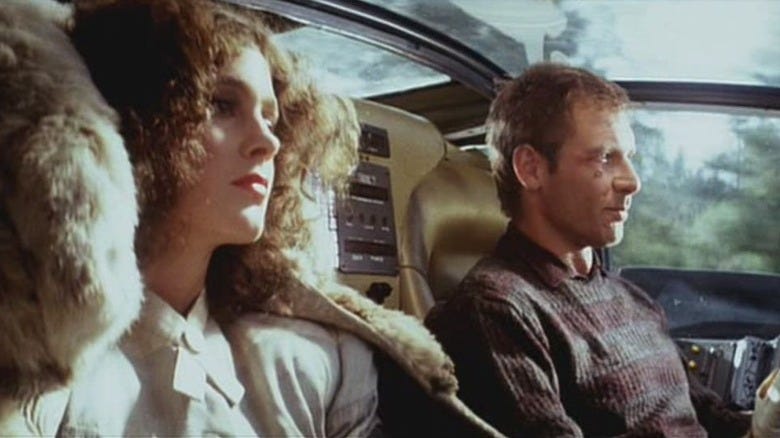Zen & Robots (part 1)
Seeking serenity
During his college years in 1980s Dublin the boy spent many rainy afternoons in the city’s hole-in-the-wall bookstores. Near the Ha’penny Bridge he found a large paperback called The Three Pillars of Zen. A good Catholic boy at the time, he knew absolutely nothing about Buddhism, but was intrigued by the serene cover photo of hazy lakeside trees.
In the 1950s the author, Philip Kapleau, was the first American to be admitted as a full student at a Zen monastery in Japan.
The style of Zen that Kapleau trained in was a particularly strict school overseen by Hakuun Yasutani-Roshi. The students kept to a samurai-severe disciplinary schedule. Kapleau and his peers were obsessed with achieving a kensho awakening experience. Kapleau’s book is full of first-person accounts of students who meditated on paradoxical koans in pursuit of enlightenment.
These accounts were so compelling that the boy decided that he needed his own kensho experience. If there were any Zen teachers in 1980s Ireland the boy certainly wasn’t aware of them, and so had to learn meditation from the few obscure books available, and by sitting cross-legged on his narrow bed.
The Zen concept of “non-self” in particular was incomprehensible to him. The Buddha had used the Pali term anatta, while in Japan they called it muga. Whatever the name, it was an obscure mystery to the Dublin teenager.
Until one day the boy saw the mesmerizing new science-fiction film Blade Runner, starring Harrison Ford.
During the course of the film the character Rachael has a scene that gives a possible vision of anatta.
Harrison Ford plays Deckard, whose job is to terminate any rogue replicants, artificially-engineered humanoids.
During the course of his investigations he meets Rachael, an employee of the Tyrell Corporation that creates the replicants. He eventually discovers to his surprise that Rachael is herself a replicant, but that she is completely unaware of her true nature.
In a taut conversation, by vividly describing her private childhood memory of an orange spider outside her bedroom window, Deckard proves to Rachael that all her memories were artificially implanted.
Rachael finally comprehends that she is not human at all, but a replicant manufactured by Tyrell. The beloved childhood family photo she possesses is a fake, just a prop given to strengthen her delusion.
The viewer watches Rachael’s face as she is plunged into a spiritual abyss. She realizes that her entire identity is a fiction — this is non-self depicted as a suddenly devastating experience.
She flees the scene, discarding her now-worthless family photo. In voiceover Deckard describes it as “a snapshot of a mother she never had, a daughter she never was.”
Later in the film Rachael returns to save Deckard’s life. She is no longer the same person. Her prior self-identity has completely dissolved — so what remains? The zen koan that seems relevant is “What was your Original Face before your parents were born?”
The final scene of the film is of Rachael and Deckard escaping the dark oppressive city and driving into a beautiful forest like that depicted on the cover of Kapleau’s book.
By 1966 Philip Kapleau had left Japan and became abbot of the Rochester Zen Center in New York. He softened some of the strict Japanese rules and rituals for an American audience, a decision that led to a traumatic break with his own zen mentor Yasutani.
Shedding the self has consequences, the boy realized, but is the only path to the forest of serenity.
(This is the first part of a two-part series. The next article looks at the recent HBO robot series ‘Westworld,’ and can be found at this link:
________________________________________
NOTES:
This essay refers to the original theatrical release of Blade Runner that one viewed back in 1982. Years later in 2007 the director Ridley Scott would release his ‘Final Cut’ version that dropped the voiceover track and the “uplifting” forest end-scene.
Rochester Zen Center: https://www.rzc.org/about/who-we-are/our-beginnings/










Bravo!